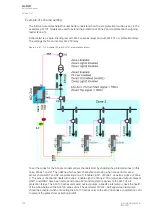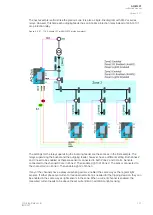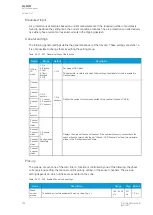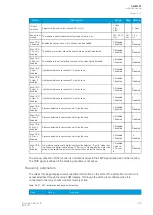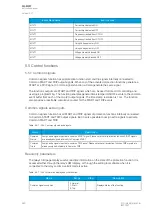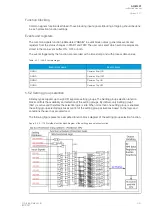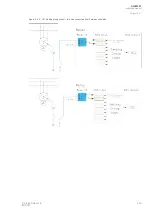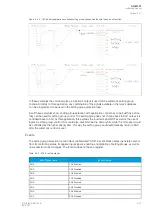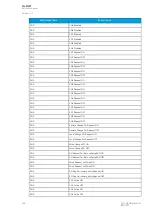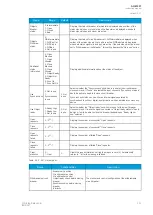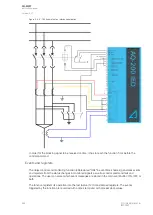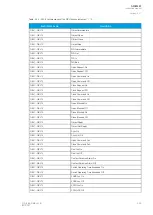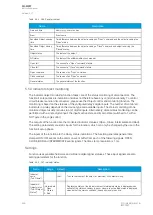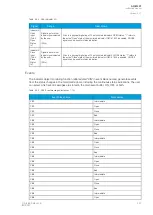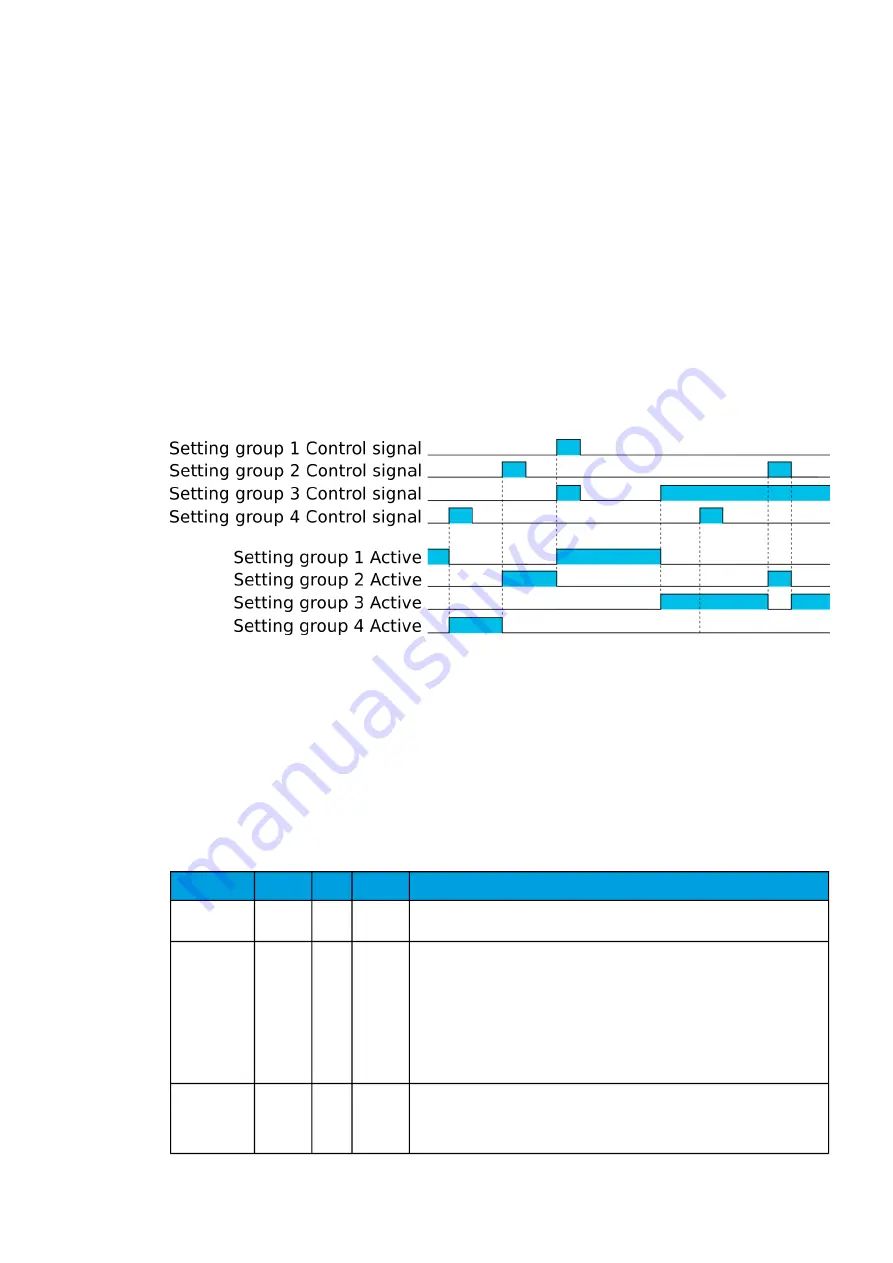
Setting group selection can be applied to each of the setting groups individually by activating one
of the various internal logic inputs and connected digital inputs. The user can also force any of the
setting groups on when the "Force SG change" setting is enabled by giving the wanted quantity of
setting groups as a number in the communication bus or in the local HMI, or by selecting the wanted
setting group from
Control
→
Setting groups. When the forcing parameter is enabled, the automatic
control of the local device is overridden and the full control of the setting groups is given to the user
until the "Force SG change" is disabled again.
Setting groups can be controlled either by pulses or by signal levels. The setting group controller block
gives setting groups priority values for situations when more than one setting group is controlled at the
same time: the request from a higher-priority setting group is taken into use.
Setting groups follow a hierarchy in which setting group 1 has the highest priority, setting group 2 has
second highest priority etc. If a static activation signal is given for two setting groups, the setting
group with higher priority will be active. If setting groups are controlled by pulses, the setting group
activated by pulse will stay active until another setting groups receives and activation signal.
Figure. 5.5.2 - 179. Example sequences of group changing (control with pulse only, or with both pulses and static signals).
Settings and signals
The settings of the setting group control function include the active setting group selection, the forced
setting group selection, the enabling (or disabling) of the forced change, the selection of the number of
active setting groups in the application, as well as the selection of the setting group changed remotely.
If the setting group is forced to change, the corresponding setting group must be enabled and the
force change must be enabled. Then, the setting group can be set from communications or from HMI
to any available group. If the setting group control is applied with static signals right after the "Force
SG" parameter is released, the application takes control of the setting group selection.
Table. 5.5.2 - 257. Settings of the setting group selection function.
Name
Range Step Default
Description
Active setting
group
SG1
Displays which setting group is active.
Force setting
group
0: None
1: SG1
2: SG2
3: SG3
4: SG4
5: SG5
6: SG6
7: SG7
8: SG8
-
0: None
The selection of the overriding setting group. After "Force SG change" is
enabled, any of the configured setting groups in the relay can be overriden.
This control is always based on the pulse operating mode. It also requires that
the selected setting group is specifically controlled to ON after "Force SG" is
disabled. If there are no other controls, the last set setting group remains
active.
Force setting
group change
0:
Disabled
1:
Enabled
-
0:
Disabled
The selection of whether the setting group forcing is enabled or disabled. This
setting has to be active before the setting group can be changed remotely or
from a local HMI. This parameter overrides the local control of the setting
groups and it remains on until the user disables it.
A
AQ
Q-M257
-M257
Instruction manual
Version: 2.07
342
© Arcteq Relays Ltd
IM00021
Содержание AQ-M257
Страница 1: ...AQ M257 Motor protection IED Instruction manual...
Страница 2: ......
Страница 449: ...Figure 7 3 221 Example block scheme A AQ Q M257 M257 Instruction manual Version 2 07 Arcteq Relays Ltd IM00021 447...
Страница 470: ...Figure 8 14 243 Device installation A AQ Q M257 M257 Instruction manual Version 2 07 468 Arcteq Relays Ltd IM00021...



